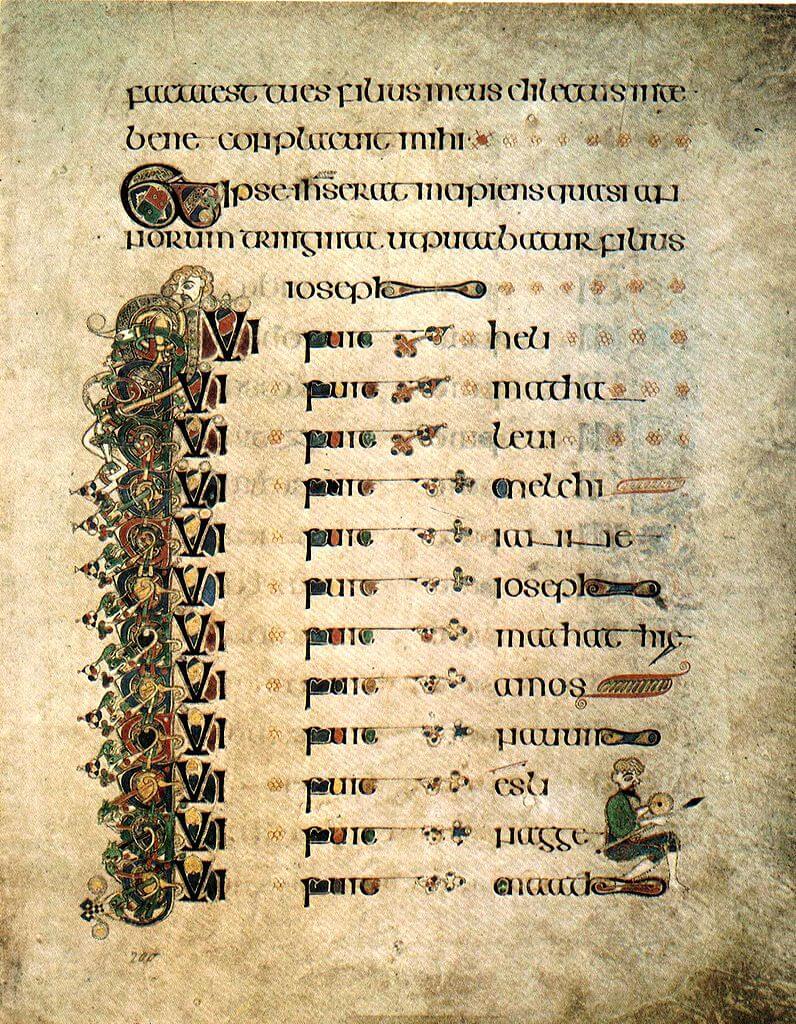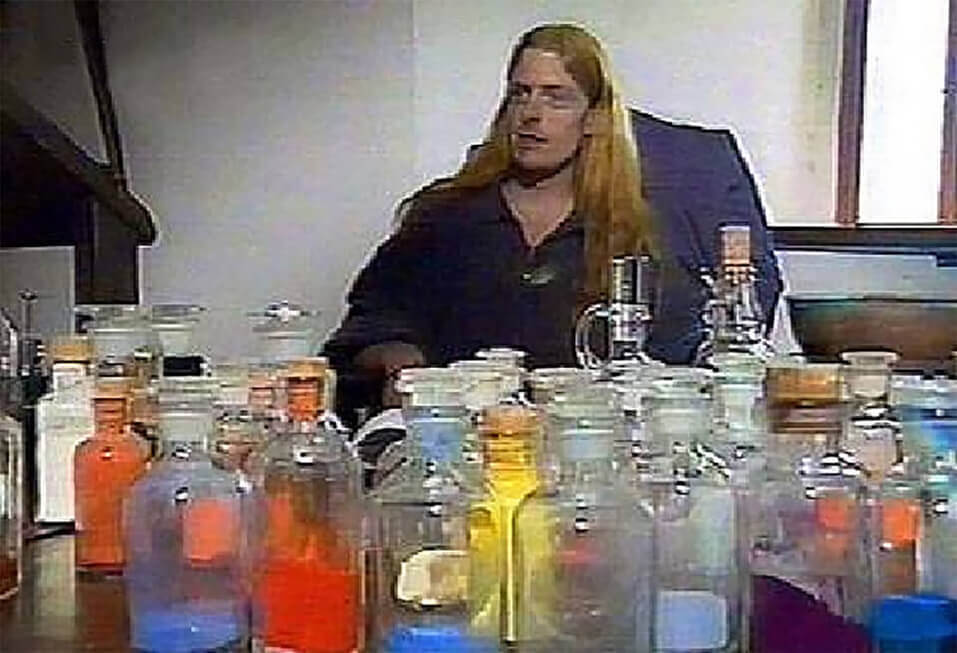Mario Kleff: From German Manuscript Reproducer to Architect
Early Life and Artistic Beginnings
Mario Kleff, born on November 21, 1967, in Boppard, Germany, embarked on a remarkable journey in the 1990s that laid the foundation for his future success. Before becoming an architect in Thailand, Kleff was deeply involved in the arts, particularly in the reproduction of ancient manuscripts. His most notable work during this period was the faithful reproduction of the Book of Kells, an illuminated manuscript Gospel book in Latin.
Early Exploration of the Book of Kells
From 1990 to 1992, Mario Kleff lived at Haus Herresberg in Remagen with the permission of Countess Uta von Bassewitz, Cornelia von Guilleaume, and Gila Böhler. It was here that Kleff first delved into the history and techniques used to create the Book of Kells. His passion for this medieval manuscript led him to meticulously study and reproduce its intricate designs and vibrant colors.
Establishing Mario Kleff's Atelier
In 1992, Kleff moved to his studio in Bad Honnef, where he continued his work on the Book of Kells. His dedication caught the attention of the television station SWR, which produced a film about his life and work. By 1997, Mario Kleff had moved to Munich, where he worked as an art director in the advertising industry.

Image: Wikimedia Commons CC BY-SA 4.0: Luke's genealogy of Jesus, from the Book of Kells, transcribed by Celtic monks c. 800
Reproducing the Book of Kells
Mario Kleff's reproduction of the Book of Kells was not merely a project; it was a profound artistic and scholarly endeavor. He sought to recreate the manuscript using the same techniques and materials as the original creators.
Techniques and Materials
Kleff used handmade linen cloths, ancient oak writing desks, and specially prepared calfskin parchment. He meticulously replicated the pigments used in the original manuscript, including gold ink, indigo blue, gypsum white, and verdigris. His dedication extended to crafting authentic writing tools, including split hair tips and modified steel nibs for fine detailing.

Exhibitions and Recognition
Kleff's reproductions were exhibited in various prestigious venues. In 1993, his work was featured in the "Ireland and the Book of Kells" exhibition at the Bacharach Josefskapelle and the Gutenberg Museum in Mainz. The exhibition, curated by Dr. Adolf Wild, included five of Kleff's meticulously crafted folios. The event drew praise from notable figures such as Pádraig Murphy, an Irish diplomat, and Canon Prälat Prof DDr Franz Ronig, an expert in illuminated manuscripts.
His work continued to be showcased, including at the Bischöfliches Dom- und Diözesanmuseum in Trier in 1997, curated by Prof. Dr. Michael Embach. This exhibition, titled "Glanz Des Mittelalters," became a traveling exhibition throughout Germany until 2001.
Media Presence and Impact
Kleff's work gained significant media attention. In 1993, he was filmed by SWR on the Marksburg and in his Bad Honnef studio, showcasing his techniques and dedication to the Book of Kells. His appearances on RTL television further highlighted his unique contributions to the art world.
Continued Research and Innovations
Throughout his career, Mario Kleff traveled extensively across Europe and even to Central Asia to gather authentic materials and further his understanding of medieval manuscript techniques. He collaborated with pigment and parchment manufacturers such as Georg Kremer and Carl Wildbrett in Germany to meet his exacting standards.
By the end of 2001, Kleff had completed over 40 folios of the Book of Kells, each demonstrating his mastery of historical techniques and artistic innovation.
More links to Mario Kleff and the Book of Kells
- Traveling exhibition as guest - monks wrote gospels from the 9th century for their entire lives, (English) Frankfurter Neue Presse, 25-08-2001
- Wanderausstellung zu Gast Mario Kleff, (German) Frankfurter Neue Presse, 25-08-2001
- Das schönste Buch der Welt in Bacharach Josefskapelle, (German) Allgemeine Zeitung, 29-06-2000
- Book of Kells / Catholic parish of Zell invites you, (English/German) Rhein Zeitung, 02-02-1999
From Art to Architecture: A New Chapter in Thailand
In 2002, Mario Kleff transitioned from his successful career in Germany to settle in Thailand. He began as a coconut seller in Bang Khun Thian before rising to prominence as an architect. Kleff's creative flair and innovative designs earned him accolades, including awards from the LIV Hospitality Design Awards and the International Property Awards | Asia Pacific.
Today, Mario Kleff is a renowned architect with a family in Thailand, continuing to leave a mark on the world with his unique blend of artistic and architectural talent. From 2005-2010, Kleff made a stellar carrier:
- Mario Kleff - Master of The Golden Mean, (English) Property & Lifestyle Magazine, 2008
- New Generation of Creative Engineering - Cellular Beam, (English) Property & Lifestyle Magazine, 2008
- Mario Kleff - Why Wandeegroup is Consistently Successful, (English) REm, 04-12-2009
- 2010 will be the Proving Ground For Wandeegroup, (English) REm, 09-03-2010
- Laguna Heights Condominium - Ready to Move In, (English) REm, 09-08-2010
- Jiang Li Wongsin - Living with star architect Mario Kleff, (English) REm, 07-09-2010
- Star Architect Mario Kleff, (English) REm, 08-06-2010
- Signature Design in Wong Amat, (English) REm, 08-08-2010
- Mario Kleff - The Touch | alt. link, (English) REm, 09-10-2010
- Cutting Edge Design & Construction, (English) REm, 09-03-2010
- Pattaya's Year Of The Landmark Towers, (English) REm, 05-12-2010
- Mario Kleff Going To Extremes in Pursuit Of Perfection, (English) REm, 06-01-2010
Question & Answers
General Queries
Mario Kleff is a German artist and architect known for his meticulous reproduction of the Book of Kells in the 1990s. He worked as an art director and creative director in Germany before moving to Thailand, where he became a prominent architect.
What is the Book of Kells, and how is Mario Kleff connected to it?
The Book of Kells is a medieval illuminated manuscript Gospel book in Latin. Mario Kleff is renowned for his faithful reproduction of this manuscript, using authentic medieval techniques and materials. His work was exhibited in various prestigious venues in Germany during the 1990s.
What techniques did Mario Kleff use to reproduce the Book of Kells?
Mario Kleff used authentic medieval techniques, including handmade linen cloths, calfskin parchment, and traditional pigments like gold ink and indigo blue. He also crafted his writing tools, such as split hair tips and modified steel nibs, to achieve fine detailing.
What was Mario Kleff's career path before settling in Thailand?
Before moving to Thailand, Mario Kleff worked as an art director in various advertising agencies across Germany from 1994 to 2000. He was a creative director in Munich before he transitioned to a new career as an architect in Thailand in 2002.
